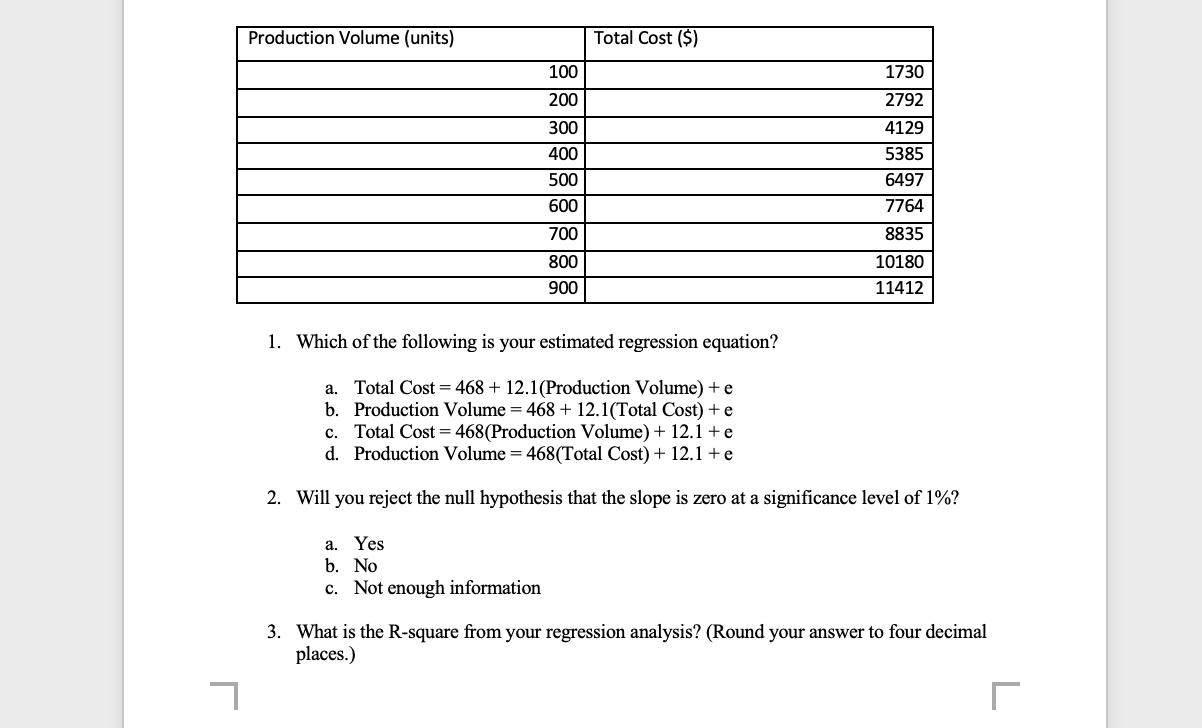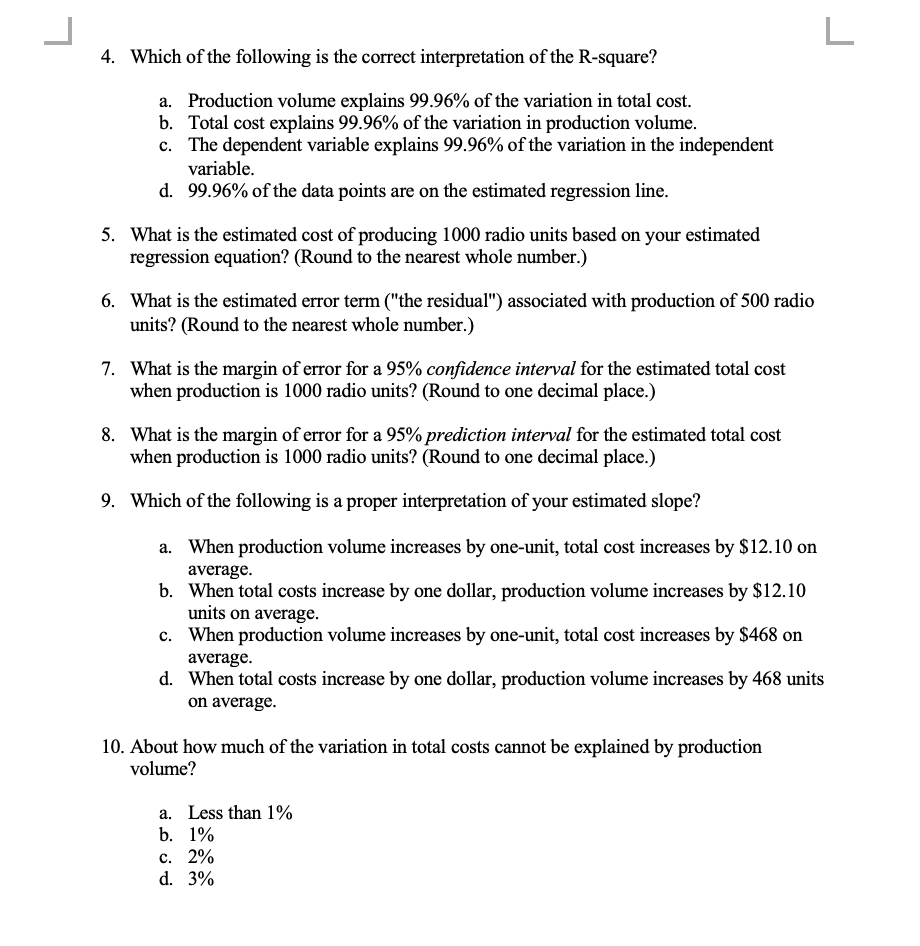Production Volume (units) Total Cost ($) 100 1730 200 2792 300 4129 400 5385 500 6497 600 7764 700 8835 300 10180 900 11412 1. Which of the following is your estimated regression equation? a. Total Cost = 468 + 12.1(Production Volume) +e b. Production Volume = 468 + 12.1(Total Cost) +e c. Total Cost = 468(Production Volume) + 12.1 + e d. Production Volume = 468(Total Cost) + 12.1 +e 2. Will you reject the null hypothesis that the slope is zero at a significance level of 1%? a. Yes b. No c. Not enough information 3. What is the R-square from your regression analysis? (Round your answer to four decimal places.) 74. Which of the following is the correct interpretation of the R-square? a. Production volume explains 99.96% of the variation in total cost. b. Total cost explains 99.96% of the variation in production volume. c. The dependent variable explains 99.96% of the variation in the independent variable. (1. 99.96% of the data points are on the estimated regression line. 5. What is the estimated cost ofproducing 1000 radio units basedonyour estimated regression equation? (Round to the nearest whole number.) 6. What is the estimated error term ("the residual") associated with production of 500 radio units? (Round to the nearest whole number.) 7. What is the margin of error for a 95% condence interval for the estimated total cost when production is 1000 radio units? (Round to one decimal place.) 8. What is the margin of error for a 95% prediction interval for the estimated total cost when production is 1000 radio units? (Round to one decimal place.) 9. Which of the following is a proper interpretation of your estimated slope? a. When production volume increases by one-unit, total cost increases by $12.10 on average. b. When total costs increase by one dollar, production volume increases by $12.10 units on average. c. When production volume increases by one-unit, total cost increases by $468 on average. (1. When total costs increase by one dollar, production volume increases by 468 units on average. 10. About how much of the variation in total costs cannot be explained by production volume? a. Lessthan1% b. 1% c. 2% d. 3%








